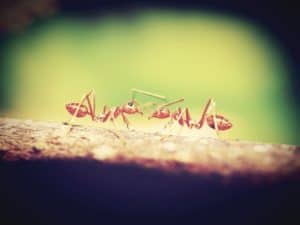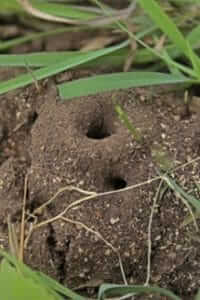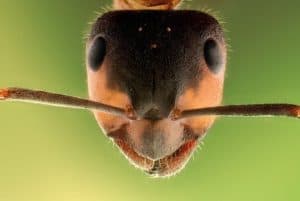Types of Ants: How to Identify Common House Ants
By : Rita Stadler
The earth is populated by about 7 billion people, and an estimated 10,000 trillion ants!
Sure, a lone little ant can’t compare to an adult human (or even a child for that matter), but the numbers certainly aren’t in our favor. Fortunately, very few ants are actually dangerous; they actually play an important role in the ecosystem. Usually, ants are more of a nuisance than anything else. Understanding the different types of ants and how to identify them will help you in removing these household pests from your home. In this article, learn more about the different types of common household ants and how to identify them.
What are the most common types of ants found in a home?
More than 12,000 different types of ants have been identified around the world. Only a small fraction of these are house ants, though. If you’re seeing ants around the house, being able to identify them will make it easier to get rid of them. We’ve put together a list of the most common house ants to help make it easier for you:
Argentine ant: Linepithema humile are brown ants, typically found throughout the southern United States. Argentine ant colonies are extremely large, numbering into the millions at times. They usually nest outdoors, around plants and in mulch. Although they typically live outside, they may invade homes and buildings when foraging for food, which they do night and day.
Carpenter ant: The appearance of Camponotus can vary quite a bit, but they tend to be larger than other ant types. Their color can range from yellow to brown to black. Carpenter ants do not eat wood, but they are a significant structural pest because of the damage they cause by tunneling through moist or damaged wood.

Odorous house ant: Tapinoma sessile tend to be medium sized – about 1/8 inch – and brown or black in color. They are most recognizable by the rotten coconut odor released when they are crushed. Odorous house ants tend to nest near water, so may be found in kitchens, bathrooms, or near household appliances like water heaters or washers. They tend to favor sweet foods.

Pharaoh ant: Monomorium pharaonic appear quite small, only about 1/16 of an inch long, and are found throughout the United States. Their color tends to yellow or light brown. Pharaoh ants eat a variety of foods, rotating between sweets, fats, and protein. In warmer climates, they may nest indoors or outside, but in colder areas, they will seek places that provide heat and moisture. Bathrooms, laundry rooms, and kitchens are ideal locations for these ants.
Ant identification tips
If you are seeing ants around the house, and they don’t seem to be any of the ones listed above, you can use these tips to help figure out your pest problem.
Controlling invasive ants is challenging, so ant identification is an important first step. Knowing their habits and food preferences will give you an advantage. If you are able to observe ants around the house, here are a few things to take note of:
- size
- color
- what they are heading towards
- and where they are coming from.
All ants have a hard exoskeleton, 2 antennae, 6 legs, and a body that is divided into 3 segments: head, throax, and abdomen. There is some variance in size, although ants are generally small, most measuring less than half an inch long. Different types of ants come in different colors, although most appear to range from yellowish, reddish, brown or black.
Ants are mostly harmless, posing very few threats to people or property, but play an important role in the ecosystem. Ants are excellent decomposers, breaking down organic matter and aerating soil. Finding planet friendly ways to control these little pests is vital for the safety of your family and our environment.







 day
day